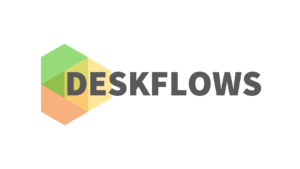Why Deskflows?...
Why Deskflows?
Why Deskflows?
This is the first (of many!) posts here on the Deskflows blog! We look forward to bringing you the best content to empower support teams around the world!

Deskflows was born out of a bother that support or service teams are “boring” or a necessary evil. For us, the customer service team is a fundamental business tool that brings many contact opportunities and especially understanding issues and opportunities directly with its users. It is through this team that the customer has the closest contact with your value proposition, and it is also through this team that your company positions itself to its customers.
Being an activity of this level of importance, the idea is to do it in the most productive way possible. Being productive doesn’t necessarily mean just doing what you have to do faster; it also involves a change in the team’s culture standard and also the overall alignment of value delivery and customer experience.
In my previous professional experiences, I always tried to bring the best customer service, always remembering the business components involved in it. This also means always keeping an eye on team cost and efficiency, balancing them with the satisfaction and empowerment of support teams.
It is a fact that more sustainably productive teams (with clear results and alignment of execution) collaborate with a better climate and less stressful situations. And Deskflows’s big purpose is precisely to enable this productivity and allow service leaders to focus on team development rather than orchestrating support demands.
This is only possible when work tools bring real-time productivity view, enabling the team and leaders to clearly understand where service bottlenecks are and how to act on them. This is based on a process modelling designed to understand service standards and communicate to the entire team when any parameter is outside this standard. This makes it possible to know, according to alert events, whether your team is under or oversized. This also allows you to reallocate resources within short time periods depending on volume and service queues.
After improving the efficiency of the service team, it is important to also improve communication with other internal teams, especially the technology and product teams. For this, it is important to have clear communication of priorities and real control of the execution of demands in all company processes. This makes prioritization more fluid and makes teams deliver much more value to their customers in an agile way.
Finally, Deskflows was born from a real pain experienced by a real team that we intend to solve in other real service teams that may be more productive with less stress.